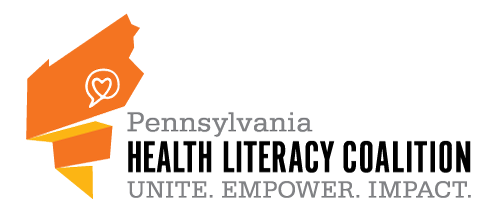Hillary Holes, CHES, Director, Health Equity at Healthcare Council of Western Pennsylvania (HCWP), and PAHLC team member attended the 2022 Wisconsin Health Literacy Summit in early April. We asked Hillary to share some of the most impactful moments of her conference experience with the Coalition. Below Hillary details major takeaways from the Summit and resources to identify trusted health information online.
The 2022 Wisconsin Health Literacy Summit was held in-person from April 4-7 in Madison, Wisconsin. The theme of this year’s summit was, “Embracing Health Literacy in the New Normal: Digital Communications, Telehealth, Health Insurance, and Health Equity.” The Summit included over 75 presenters and 20 different breakouts workshops. These presenters shared the challenges they faced, what they learned, and how they continue to improve health communication.
Dr. Abdul El-Sayed, a Physician and host of the podcast, America Dissected, began the pre-summit event by discussing “Seven Observations on the Art of Communicating Science.” Dr. El-Sayed prefaced the Summit by illuminating what we as health communicators learned throughout the COVID-19 pandemic when it comes to communicating health information with different populations. Some takeaways included communicators have to be thoughtful about their audience and understand that their audience may have different values and beliefs.
The second day of the Summit continued the conversations on communicating health information through keynote sessions, breakout workshops, and networking opportunities. One breakout workshop that resonated with health literacy techniques was focused on deploying community members in their communities to share health information. Kim Jay with Sinai Urban Health Institute in Chicago, IL discussed, “Utilizing a Culturally Competent Approach to Design, Implement, and Train Populations Served.” Working in conjunction with the Chicago Department of Public Health and the Chicago Cook Workforce Partnership, Kim and her team were able to train and onboard approximately 600 community mobilizers throughout 31 different neighborhoods around the city of Chicago. This program gave an example of how community members can increase contact tracing and decrease vaccine hesitancy by communicating health information in an easy-to-understand approach.
One of the last breakout workshops I attended was, “Addressing Health Misinformation to Advance Health Literacy,” lead by a three-person group through the Network of the National Library of Medicine (NNLM). The beginning of the workshop included interactive polls that honed in on where we have seen health misinformation. It was shocking to see that many workshop attendees identified the same platforms and digital environments! The group then discussed some resources that are available through the NNLM including such as this page from NNLM’s Reading Club and the U.S. Surgeon General’s Community Toolkit for Addressing Health Misinformation. One of the resources I particularly liked was a fact sheet that can help everyone identify trusted health information, “A-B-C of Finding Trusted Health Information.”


Click the following links to access the PDF versions of both the English language and Spanish language A-B-C For Finding Trusted Health fact sheet.
